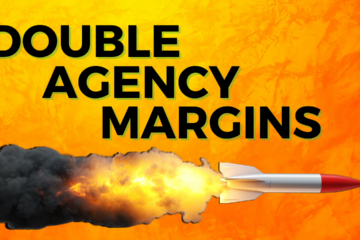I lost $23,442 with a really bad choice.
That was money I needed, because this was my first business – and my bank account was running on fumes.
Here’s the bad choice I made, and what you can do if it happens to you –
I did what most businesses do: I delivered to the customer- then sent an invoice, and waited. And waited… Followed up… Waited some more… And again… Until I realized I wasn’t going to get paid.
It’s the worst feeling.
THREE Things You Can Do Right Now to Get Your Client to Pay
If you’ve got clients that aren’t paying, it’s the worst feeling. You’ve done the work, they aren’t paying the bill … And you feel this pit in your stomach like you’ve been robbed. If it’s an ongoing client, feeling like you need to keep working for a deadbeat.
Here are three things you can do right now to get your client to pay:
1. Negotiate New Terms
If the client says they don’t have the cash to pay, your first move should be to negotiate terms.
This could mean agreeing to be paid in installments. If you do this, the key is to get it in writing so you have a paper trail if they stop paying the installments.
The second approach is to agree to take a partial payment – say 60% of the total amount owed. Get it in writing. It’s better to take something than nothing at all.
2. Send a Demand Letter
If the client won’t play ball on negotiated terms, the next escalation is sending a demand letter. This is a formal letter saying you expect payment by X date and will pursue legal action if the deadline isn’t met.
Hire a lawyer to draft and send the demand letter on their legal letterhead for maximum effect. The letter will outline the amount owed and date it was due. It provides written evidence you have formally notified the client and are owed the money.
I find with my clients who are going through this (before fixing it once and for all as I describe below) – sending a demand letter results in successfully collecting payment 30-50% of the time. Not great odds – but better than nothing.
3. Go to Collections
If a demand letter doesn’t work, the last resort is to go to a collection agency. They’ll take a percentage cut of anything they can recover – usually between 20% to 30%.
I find the odds of getting anything vary between 10-30% on average. But collections agencies have legal knowledge and tools you don’t, so they may succeed where you won’t.
Be sure to choose a reputable firm (ideally getting a referral) and check reviews to avoid shady outfits who could make the situation worse.
TWO Things You Should NEVER Do
When trying to get a client to pay, there are two crucial things you should never, ever do:
1. Self-Enforce
Don’t take matters into your own hands by holding a client’s assets hostage, ceasing work until you’re paid, or releasing confidential information. These open you up to lawsuits (or even criminal charges), and make the situation much worse. Talk to an attorney before taking any enforcement actions.
2. Public Shaming
Posting on social media, writing bad online reviews, or telling all your contacts not to work with them may feel satisfying. But again – doing this without first consulting your attorney can create legal issues. Defamation lawsuits are not fun. Keep your fight confidential.
ONE Way to Prevent This from Ever Happening Again
Want to make sure you never have non-paying clients ever again? Here is the #1 technique:
Don’t be a bank.
Banks lend money based on the creditworthiness of the customer. And they charge interest for that. Invoicing in arrears is giving the customer a loan. Unless you’re evaluating creditworthiness, and charging for a loan, don’t do it.
Before starting work, have a written agreement in place requiring that payment is to be made in advance.
I did this with my clients – using ACH (directly debiting their bank account) to get paid before I delivered.
For large projects, require installments correlating with milestones or upon completion of phases – and get each installment in advance. The key is tying payment to progress – never, ever do 100% of the work before getting paid in full.
By getting payment upfront or in installments, you’ll weed out deadbeats unwilling to commit capital and will get compensated as you hit milestones.
Doing this one simple thing ensures you’ll get paid for the work performed. I’ve owned services business for over 15 years and not once had a collections issue once I adopted this.
Client not willing to pay in advance? Not a good client. Move on.
It isn’t fun dealing with clients who refuse to pay – negotiate terms, send a demand letter, and use a collections agency if needed. Then stop messing around and get paid in advance.

